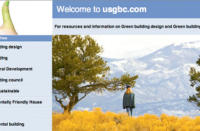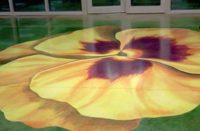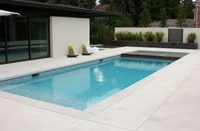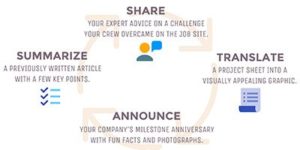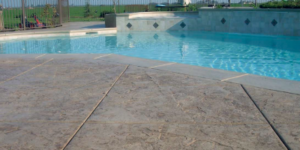Designing decorative concrete is no different from any other process that has endless options. The first step is to ask the questions that define the project and guide the design.
It’s not your imagination — the construction market is currently much more competitive. When opportunities exist, beating the odds to win the job and the increase of price pressures require more marketing tools and salesmanship than at any time in the last decade.
Contractors are asking themselves: How can I stand out in a tough market? How can I give my customers added reasons to choose my company for their next projects?
Direct and indirect competition
At a time like this, it is important for decorative contractors to size up both direct and indirect competitors.
Looking at the direct competition: How does your customer service stack up? Do you make it easy to do business with your company? Do you offer the right product mix? Distributors who are supplying decorative materials have noted that the contractors who offer the most diverse range of products and services have more projects on the go right now. That is because offering many different types of decorative concrete allows contractors to move the customer to the right-priced service without reducing pricing.
Indirect competition to decorative concrete comes from alternative paving and flooring materials. Exterior decorative concrete competes for jobs with asphalt, precast unit pavers and natural stone. Interior staining and polished concrete compete with tile, terrazzo, carpet, epoxy and vinyl/linoleum products. The best way to show customers the advantages of using decorative concrete is to compare the installed cost of each service to alternative flooring and paving products. As a starting point, check out the chart at www.concretenetwork.com/stamped-concrete/comparison.html. Labor costs vary widely in different parts of the country, so make your own chart using local installed costs.
Decorative concrete offers an excellent choice for long-term durability and low maintenance at an affordable price. For those with keen interests in green building and LEED criteria, decorative concrete has the benefit of being environmentally sound and having excellent “life-cycle costing,” a fancy way to say it is very long-lasting. The good news is that many kinds of clients that seek durable green building materials for high-traffic areas are still active: commercial buildings, schools, public projects and transportation facilities.
Projects with government or municipal funding in place are continuing under increased scrutiny to get the most out of budget dollars. The term “value engineering,” a euphemism for cost-cutting, might send chills down the spine, but it creates an opening to sell decorative concrete against more expensive indirect competition.
With a comparison chart in hand, a savvy contractor can sell decorative concrete as an economical way to extend a construction budget by replacing natural stone in large expanses, or by limiting the use of expensive granite or slate to accent areas. Less-expensive concrete can be installed in colors and textures that harmonize with materials such as marble, bluestone and granite without sacrificing aesthetics.
Proactive marketing
Faced with a competitive marketplace, contractors are busily looking for bid opportunities, updating mailing lists, networking with professional groups and producing advertising. Before jumping into these marketing activities, it is important to ask what you can offer that’s different from your competitors. Do you offer something new in your area? Do you provide unique artistic graphics? Do you offer services such as maintenance, refurbishment and restoration? Is your staff knowledgeable about the latest green building criteria? Do you offer educational programs? Do you use recycled materials? Are you superior at customer service? Can you list awards and projects you’ve done that address green building needs? Find ways to differentiate your company from your competition and be newsworthy.
Some decorative concrete companies consider their showroom their most unique and effective selling tool. Whether it’s an outdoor courtyard, a conference room or an expansive warehouse-sized showroom, a sales center with samples of a variety of concrete finishes, patterns and colors provides a great opportunity for customers to see and touch the materials that make decorative concrete so appealing. It also provides a place to invite professional groups to gather for educational meetings that show designers new possibilities.
Remember the old saying, “A picture is worth a thousand words”? Make it 2,000 words, because this is doubly true for decorative concrete. However, sending out photo-filled brochures can be too costly for mass mailings. Some large contractors e-mail quarterly or biannual e-newsletters. However, an old-fashioned postcard with a few good, colorful photos can be just as effective and cost far less. While the e-mail may be seen once, designers may keep an eye-catching postcard on their bulletin board as an inspiration. A beautiful postcard is also a keeper you can leave with customers and distributors to use for referrals.
Fantastic short-run color printing is available inexpensively. Several printers offer predesigned formats and make printing professional-looking marketing tools affordable for small businesses.
For the best results, be sure your postcard or newsletter includes your phone number and “call to action” statements, such as these:
- “Schedule a visit to our showroom to see beautiful samples.”
- “Call for free professional consultation and estimates.”
- “Visit our Web site to see more examples.” (Don’t forget to include your Web address with this one.)
Selling from strength
In a buyer’s market, working on your satisfaction ratings is important to your reputation. Sending or delivering a “Customer Satisfaction Survey” with a cover letter demonstrates your interest in knowing the customer’s viewpoint. It can provide a second chance to solve any problems. Customer surveys identify what customers think — which may be different than what you think they think. As part of a follow-up program when the job is finished, customer surveys increase the chance that you will receive valuable referrals from satisfied customers.
In your customer satisfaction survey, leave space for people to answer these open-ended questions:
- How did you find out about us?
- Please explain why you decided to use decorative concrete.
- Please tell us if the appearance and quality of the finished project met your expectations.
- Please comment on our service and staff.
- Please tell us about any areas we could change to improve customer satisfaction.
- Please tell us why you would or would not recommend us.
Repetition, repetition, repetition
In advertising, repetition is the way to get your company name remembered. Repeating the benefits of decorative concrete in your sales materials and mailings is crucial to getting them remembered, too. Restate the key benefits often, in as many ways as possible.
The key benefits of decorative concrete are:
- Beautiful, natural appearance
- Long-term durability
- Excellent life-cycle costing
- Environmental soundness — it meets LEED criteria
- A wide range of colors and color effects
- Many choices for textures and patterns
- No delays in availability
- Minimal maintenance if correctly sealed
- Versatile and unique
- Cost-competitive
Perhaps these benefits sound obvious to anyone in the concrete business, but prospective customers may not have stopped to think about how all these benefits add up to a great choice.
Dependability
Success in a cost-competitive market also means avoiding chances that might lead to mistakes or costly rip-outs that are reputation-damaging.
Ken Heitzman of Decorative Concrete Systems in Milton-Freewater, Ore., offers this advice for winning during challenging economic times: “Customers will continue to choose concrete because it is dependable. They return to decorative contractors that are dependable. Now, it is more important than ever to stick with products that offer performance that is dependable, too.”
Three Tips for Better Marketing Surveys
1. Enclose a self-addressed, postage-paid return envelope.
2. To make satisfied customers an extension of the sales force, enclose a company brochure or postcard along with a “thank you” letter to customers who respond to the survey. That makes it easy for them to make a referral when people ask about their project.
3. If it is difficult to get surveys returned, making it an entry form as part of a drawing for “customer appreciation gift certificates” improves the return rate.
